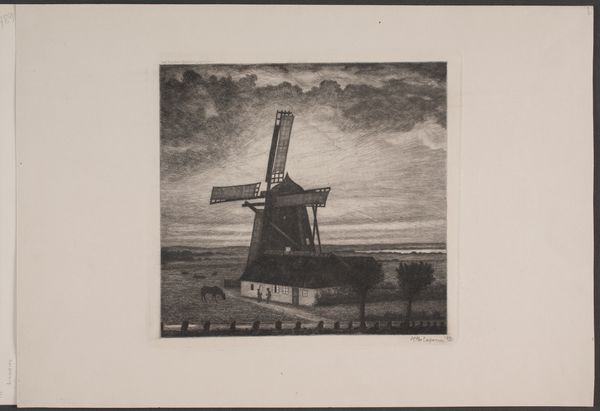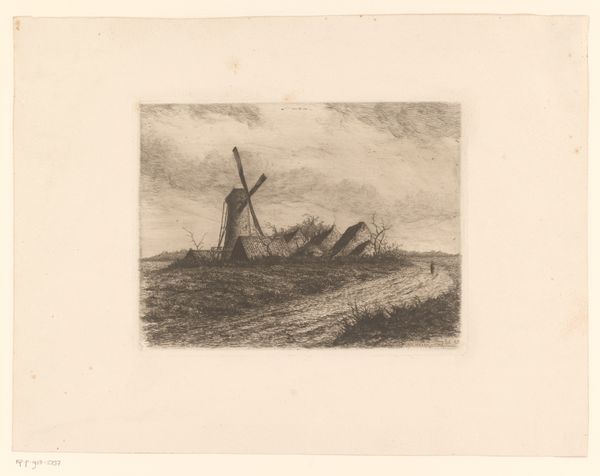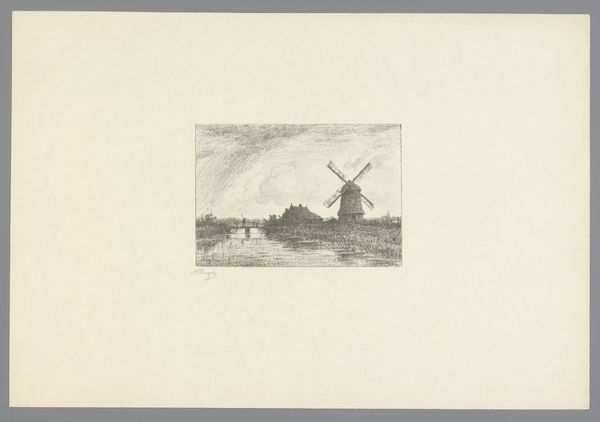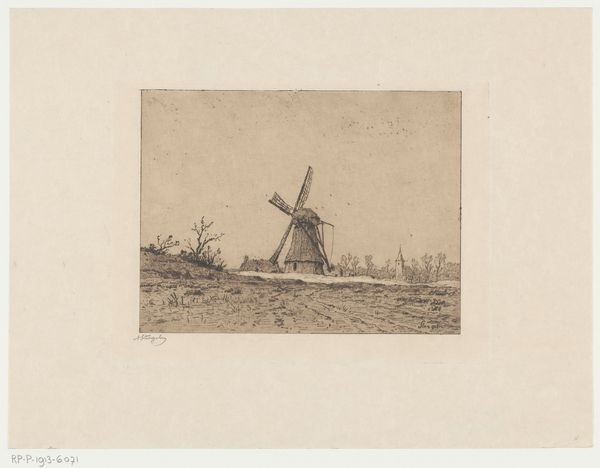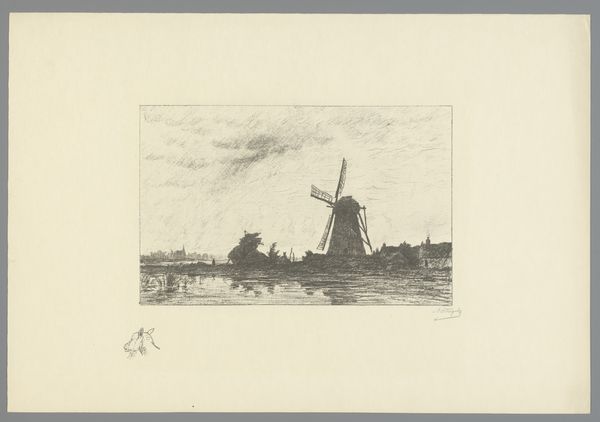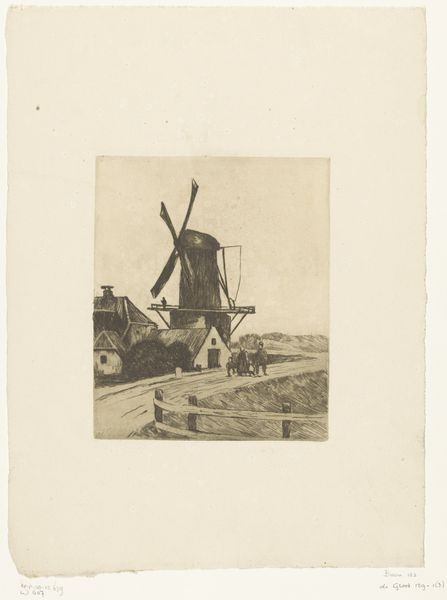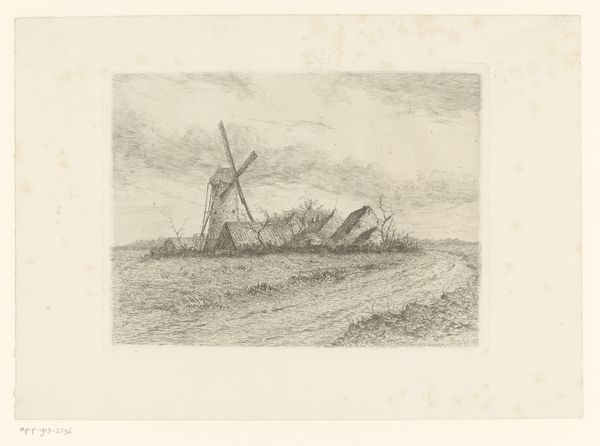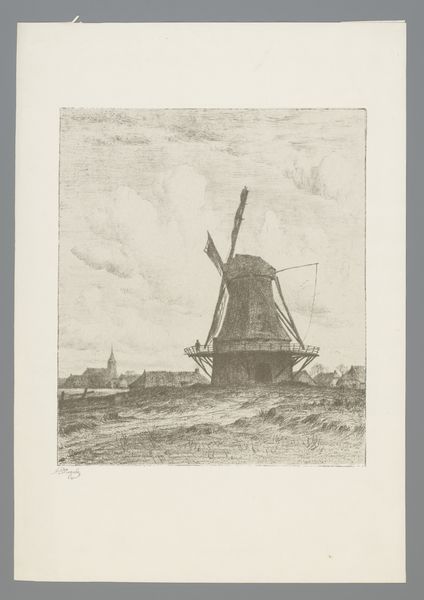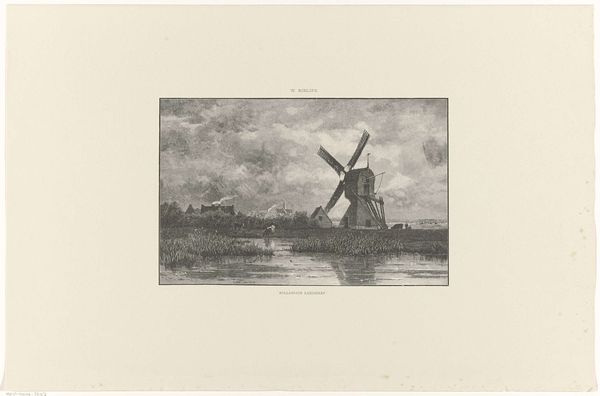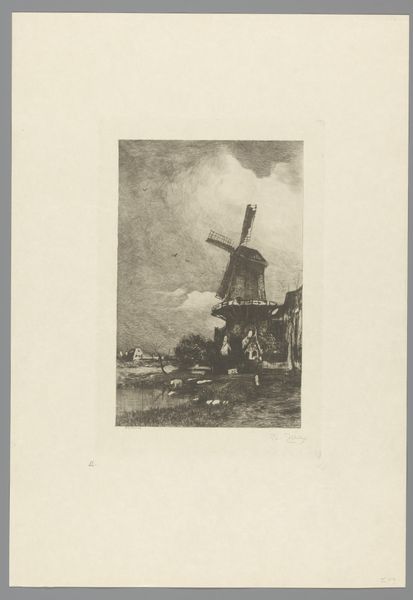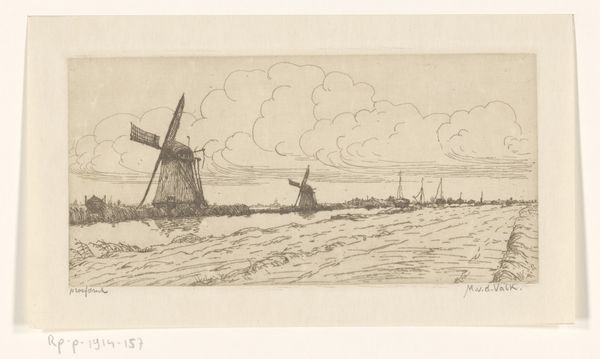
Dimensions: height 238 mm, width 325 mm
Copyright: Rijks Museum: Open Domain
Curator: Here we have Alphonse Stengelin’s “Molen bij volle maan,” or “Mill by Full Moon,” an etching rendered between 1876 and 1910. Editor: It's brooding. I get this solitary, almost gothic vibe from the silhouetted windmill against that stark moonlight. It feels incredibly lonely. Curator: Yes, the composition directs us to themes around isolation. The windmill stands prominently, and historically, we see windmills as essential to communities. Stengelin places this central image, though, in an atmospheric space—there are suggestions of modernity, like industrial silhouettes in the background—creating tension. Editor: Absolutely. It is not a celebration of the quaint pre-industrial era that we see in many landscapes of the time. This piece evokes the anxiety of encroaching industrialization that many felt. The etching itself lends a starkness too—the blacks are deep. I am wondering about the social impact of this looming technology? What kind of politics were emerging at the time of its creation? Curator: This aligns with a moment when artistic movements grappled with depicting the societal changes. The Impressionist style lends itself to capturing ephemeral, sensory experiences of the natural world, however, that choice is still rooted in power and privilege, of the right to pause and consider how something felt. Editor: The scale contributes too. Because this work is small and presented using print media it also feels accessible, mass-produced. And perhaps speaks to class divisions that have grown through the changing landscape? The artist makes visible that which may not be at the forefront for some patrons and institutions. It makes the image even more urgent, right? Curator: I appreciate how your perspective brings focus to the lived experiences embedded within the landscape tradition. It invites consideration of progress and how it is always unevenly distributed, something that still rings true. Editor: Looking at it, one cannot avoid these reflections, indeed. This artwork invites to contemplate history with critical engagement. Thank you for giving it some much needed context.
Comments
No comments
Be the first to comment and join the conversation on the ultimate creative platform.
